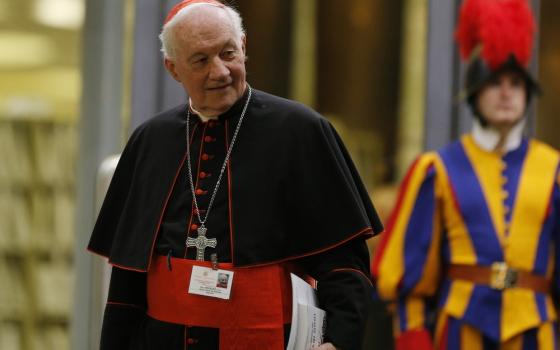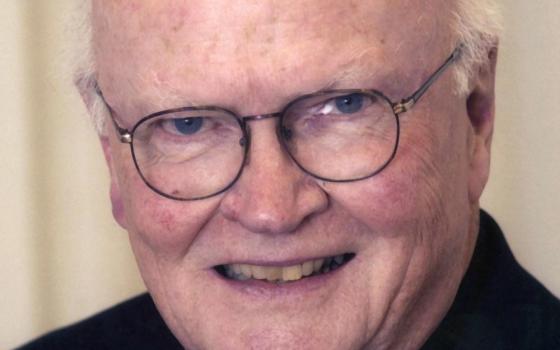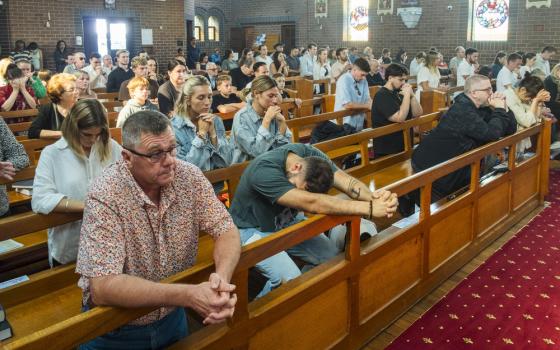
Of the various celebrations of the Feast of Christmas, the readings for the Mass during the day are especially profound and beautiful. We all know the familiar Lucan Christmas narrative (read at the Vigil Mass and the Mass at dawn), but the earthshaking and life-changing prologue hymn to the Gospel of John is the perfect capstone to the scriptures of the Advent season.
|
Christmas Mass (during the day) Isaiah 52:7-10 |
At the beginning of Advent we envision Christ the King as the one who brings God's reign in all its apocalyptic fullness. In the midst of the season we begin to reflect on the Jesus of history. Now in John's prologue, Christ the Logos, the Word of God made flesh, is revealed to have been present "in the beginning."
The ancient hymn "Corde Natus ex Parentis" ("Of the Father's Love Begotten") is a perfect commentary of this reading. It is probably the most ancient hymn we have expressly celebrating the mystery of the Incarnation. The text by Aurelius Prudentius, a Roman Christian, was written around 400, just after the date when Christmas is first mentioned as a feast. The tune, "Divinum mysterium," is a lovely medieval plainchant melody.
See how beautifully the text (in a 19th-century translation by English Anglican John Mason Neale) matches the prologue to the Gospel of John:
Of the Father's love begotten,
Ere the worlds began to be,
He is Alpha and Omega,
He the source and ending He,
Of the things that are, that have been,
And that future years shall see,
Evermore and evermore!
Images of the Word (incarnate and proclaimed in Jesus and his life) are woven through all the readings here. The Isaiah text rejoices both in the good news and in the One who brings that Word:
How beautiful upon the mountains
are the feet of him who brings glad tidings,
Announcing peace, bearing good news,
announcing salvation, and saying to Zion,
"Your God is King!"
This same proclamation is in the Letter to the Hebrews:
In these last days, [God] spoke to us through a son, whom he made heir of all things and through whom he created the universe ...
Once again, note the connection of God speaking his word through Christ with God speaking through Christ (the Logos) in John's prologue.
One of the most popular new Christmas carols is composer Dan Kantor's "Night of Silence." It is a quodlibet, a piece that combines two melodies. Kantor has skillfully and gently yoked his new text to "Silent Night." The reality that much of our liturgical imagery originated in the Northern Hemisphere was brought home to me when I used this piece in a workshop in Australia. They politely informed me that the images of "cold" and "snow" are completely incongruent with a culture that celebrates Christmas in the midst of summer.
Of course, Christmastide is not a single feast; like Advent, it is a season. It runs from Christmas Eve through the Baptism of Jesus, Jan. 13.
Following the pattern that established the date of Christmas as the moment when light (Christ the "Sun of Righteousness") began to break into a darkened world, the Hebrew Scriptures during these Sundays focus on a movement toward a broadening of that light (also expressed as "wisdom"). It culminates at Epiphany with the ecstatic Isaiah reading in which the light of God fills all creation:
Arise! Shine, for your light has come,
The glory of the LORD has dawned upon you ...
Nations shall walk by your light,
kings by the radiance of your dawning.
The arrival of the Magi in the Gospel is, of course, the symbolic narrative of the nations coming to this light, as the Light reaches out and fills the world.
Just as it is desirable when choosing music during Advent to focus on the Advent Scriptures, it is equally desirable to keep the rich Christmas carols sounding straight through to Epiphany -- both patterns that will run counter to the larger culture.
One last song -- "From the Cradle to the Cross" by Tony Alonso. It is not a song for liturgical use, but the rich text is helpful in our reflections in these days, as it connects Christ's birth with his death and resurrection. For many people the innocent joy of this season is mixed or even negated by sorrow, loneliness and grief. The message here -- that God's grace and engagement in our world encompasses all our joy, all our sorrow and all our hope -- is central to our celebration of the true and full message of the Incarnation.
[Marty Haugen is a composer of liturgical music for Roman Catholic and Protestant congregations, with more than 400 compositions published by GIA, Augsburg Fortress and other publishers.]



